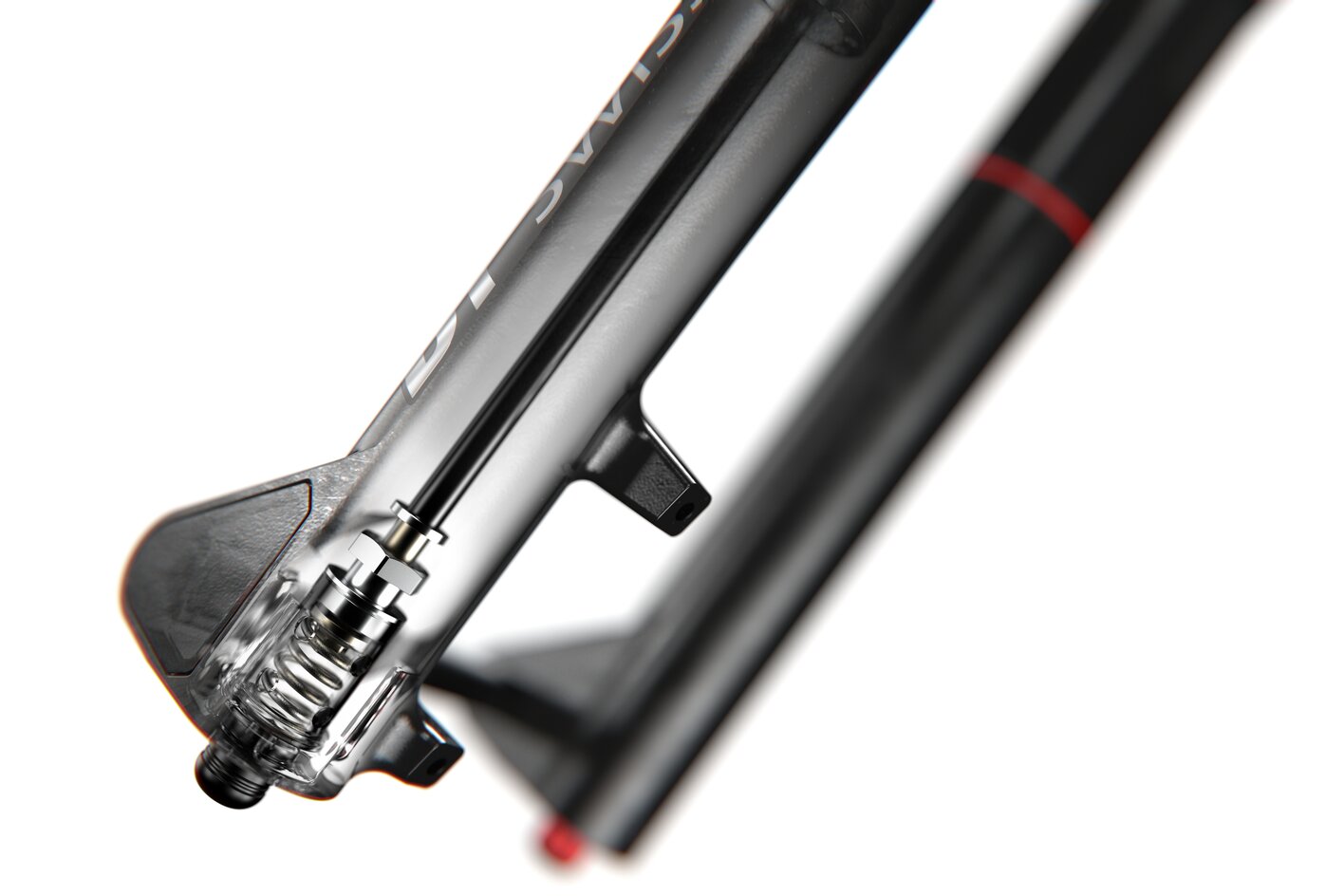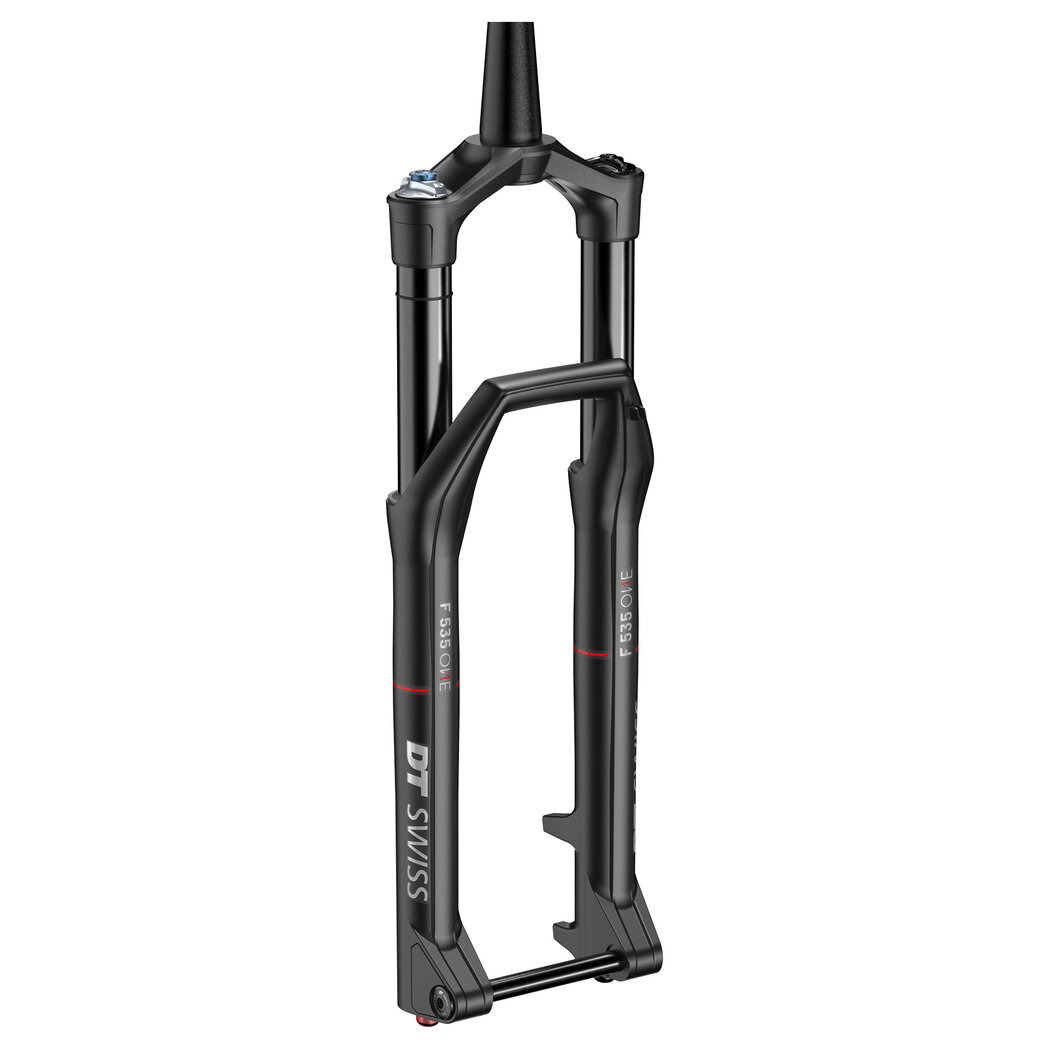F 535 ONE
Erlebe eine neue Dimension von Kontrolle, angetrieben von einem einzigartigen wegabhängigen Dämpfungssystem.
- EVP € ab € 1 139
- Nettogewicht ab 2090 g
- ab CHF 1 139
- ab $ 1 139
Produktdetails
Die F 535 ONE geht mit ihren beiden einzigartigen Funktionen noch einen Schritt weiter. PLUSHPORT ist ein wegabhängiges Dämpfungssystem, das durch einen Bypass im Öldämpfer angetrieben wird und über den gesamten Federweg eine unterschiedlich starke Druckstufendämpfung generiert. Zum Beispiel bleibt die Gabel bei einem steilen, technisch anspruchsvollen Gelände hoch im Federweg und gibt präzises Feedback von der Strecke, während sie die härtesten Schläge abfedert. COILPAIR sorgt für Sensibilität bei kleinen Stössen und eine anfangs niedrige Druckstufendämpfung, wodurch das Laufrad für eine maximale Traktion dem Boden folgen kann. Die Kombination beider Technologien bietet eine neue Dimension der Kontrolle während deiner All Mountain-Fahrt.




Wähle dein Modell
Nur ein paar Klicks zu deinem passenden Modell. Bitte benutze den Filter.

F 535 ONE 120 mm 29" 44 mm offset lever
F535OEHIMFAS46462S- Nettogewicht 2090 g
- Max. Systemgewicht 130 kg
- Max. Systemgewicht E-Bikes 150 kg
- ASTM Klassifizierung 4
- ASTM Klassifizierung E-Bikes 3
- Felgendurchmesser 29" / 700C
- Federweg [H] 120 mm
- Federungstechnologie COILPAIR / LINEAIR / APT
- Dämpfungstechnologie INCONTROL O.D.L./PLUSHPORT
- Remote Lever
- Standrohrdurchmesser 35 mm
- Einbaulänge [A] 531 mm
- Offset [B] 44 mm
- Max. Reifenbreite mm (E) 75 mm
- Reifendurchmesser max. (C) 760 mm
- Max.Ø (D) bei Reifenbreite (E) 730 mm
- Bremssattelaufnahme [F] Post mount 7"
- Schaftrohrdurchmesser [G] Tapered 1.5 - 1 ⅛ "
- Achssystem 15 mm Thru Axle
- Einbaubreite 110 mm Boost
- Werkstoff Tauchrohr Magnesium
- Schaftrohr Material Aluminum
-
Zubehör
Mini Fender
APT Kit (2 Volume spacers)
2 Brake hose clamps
Star nut set black
RWS Plug In Lever & Rod

F 535 ONE 130 mm 29" 44 mm offset lever
F535OFHIMFAS46463S- Nettogewicht 2090 g
- Max. Systemgewicht 130 kg
- Max. Systemgewicht E-Bikes 150 kg
- ASTM Klassifizierung 4
- ASTM Klassifizierung E-Bikes 3
- Felgendurchmesser 29" / 700C
- Federweg [H] 130 mm
- Federungstechnologie COILPAIR / LINEAIR / APT
- Dämpfungstechnologie INCONTROL O.D.L./PLUSHPORT
- Remote Lever
- Standrohrdurchmesser 35 mm
- Einbaulänge [A] 541 mm
- Offset [B] 44 mm
- Max. Reifenbreite mm (E) 75 mm
- Reifendurchmesser max. (C) 760 mm
- Max.Ø (D) bei Reifenbreite (E) 730 mm
- Bremssattelaufnahme [F] Post mount 7"
- Schaftrohrdurchmesser [G] Tapered 1.5 - 1 ⅛ "
- Achssystem 15 mm Thru Axle
- Einbaubreite 110 mm Boost
- Werkstoff Tauchrohr Magnesium
- Schaftrohr Material Aluminum
-
Zubehör
Mini Fender
APT Kit (2 Volume spacers)
2 Brake hose clamps
Star nut set black
RWS Plug In Lever & Rod

F 535 ONE 140 mm 29" 44 mm offset lever
F535OGHIMFAS46465S- Nettogewicht 2090 g
- Max. Systemgewicht 130 kg
- Max. Systemgewicht E-Bikes 150 kg
- ASTM Klassifizierung 4
- ASTM Klassifizierung E-Bikes 3
- Felgendurchmesser 29" / 700C
- Federweg [H] 140 mm
- Federungstechnologie COILPAIR / LINEAIR / APT
- Dämpfungstechnologie INCONTROL O.D.L./PLUSHPORT
- Remote Lever
- Standrohrdurchmesser 35 mm
- Einbaulänge [A] 551 mm
- Offset [B] 44 mm
- Max. Reifenbreite mm (E) 75 mm
- Reifendurchmesser max. (C) 760 mm
- Max.Ø (D) bei Reifenbreite (E) 730 mm
- Bremssattelaufnahme [F] Post mount 7"
- Schaftrohrdurchmesser [G] Tapered 1.5 - 1 ⅛ "
- Achssystem 15 mm Thru Axle
- Einbaubreite 110 mm Boost
- Werkstoff Tauchrohr Magnesium
- Schaftrohr Material Aluminum
-
Zubehör
Mini Fender
APT Kit (2 Volume spacers)
2 Brake hose clamps
Star nut set black
RWS Plug In Lever & Rod

F 535 ONE 150 mm 29" 44 mm offset lever
F535OHHIMFAS46466S- Nettogewicht 2090 g
- Max. Systemgewicht 130 kg
- Max. Systemgewicht E-Bikes 150 kg
- ASTM Klassifizierung 4
- ASTM Klassifizierung E-Bikes 3
- Felgendurchmesser 29" / 700C
- Federweg [H] 150 mm
- Federungstechnologie COILPAIR / LINEAIR / APT
- Dämpfungstechnologie INCONTROL O.D.L./PLUSHPORT
- Remote Lever
- Standrohrdurchmesser 35 mm
- Einbaulänge [A] 561 mm
- Offset [B] 44 mm
- Max. Reifenbreite mm (E) 75 mm
- Reifendurchmesser max. (C) 760 mm
- Max.Ø (D) bei Reifenbreite (E) 730 mm
- Bremssattelaufnahme [F] Post mount 7"
- Schaftrohrdurchmesser [G] Tapered 1.5 - 1 ⅛ "
- Achssystem 15 mm Thru Axle
- Einbaubreite 110 mm Boost
- Werkstoff Tauchrohr Magnesium
- Schaftrohr Material Aluminum
-
Zubehör
Mini Fender
APT Kit (2 Volume spacers)
2 Brake hose clamps
Star nut set black
RWS Plug In Lever & Rod

F 535 ONE 160 mm 29" 44 mm offset lever
F535OIHIMFAS46468S- Nettogewicht 2090 g
- Max. Systemgewicht 130 kg
- Max. Systemgewicht E-Bikes 150 kg
- ASTM Klassifizierung 4
- ASTM Klassifizierung E-Bikes 3
- Felgendurchmesser 29" / 700C
- Federweg [H] 160 mm
- Federungstechnologie COILPAIR / LINEAIR / APT
- Dämpfungstechnologie INCONTROL O.D.L./PLUSHPORT
- Remote Lever
- Standrohrdurchmesser 35 mm
- Einbaulänge [A] 571 mm
- Offset [B] 44 mm
- Max. Reifenbreite mm (E) 75 mm
- Reifendurchmesser max. (C) 760 mm
- Max.Ø (D) bei Reifenbreite (E) 730 mm
- Bremssattelaufnahme [F] Post mount 7"
- Schaftrohrdurchmesser [G] Tapered 1.5 - 1 ⅛ "
- Achssystem 15 mm Thru Axle
- Einbaubreite 110 mm Boost
- Werkstoff Tauchrohr Magnesium
- Schaftrohr Material Aluminum
-
Zubehör
Mini Fender
APT Kit (2 Volume spacers)
2 Brake hose clamps
Star nut set black
RWS Plug In Lever & Rod
-
Hier findest du alle Infos zu Umrüstoptionen, Manuals, Ersatzteilen und How-to Videos.
-
Hier findest du Hilfe und Antworten auf häufig gestellte Fragen.
Zu deiner Auswahl F 535 ONE haben wir 5 Produktvarianten ermittelt. Verwende den obigen Modelfinder, um die Modelle weiter einzugrenzen.
Wähle die Variante, zu der du Support brauchst.
Hier findest du Hilfe und Antworten auf häufig gestellte Fragen.
-
DT Swiss verkauft ausschliesslich über Fachhändler, diese verfügen teilweise auch über Onlineshops. Bitte wende dich an deinen Fachhändler. Oder kontaktiere den Distributor deines Landes - bitte benutze dafür das Kontaktformular und wähle zuerst dein Land und danach das Thema "Produktverfügbarkeit" aus.
-
Leider können wir keine Rabatte gewähren, wir verkaufen nicht direkt an Privatkunden. Bitte wende dich am besten an einen Fachhändler. Auf unserer Website findest du den empfohlenen Verkaufspreis.
-
DT Swiss verkauft ausschliesslich über den Fachhandel, der teilweise auch über Onlineshops verfügt. Bitte wende dich an deinen Fachhändler. Oder kontaktiere den Distributor deines Landes - bitte benutze dafür das Kontaktformular und wähle zuerst dein Land und danach das Thema "Produktverfügbarkeit" aus.
-
Vergleiche die Produkte auf unserer Webseite, unser gesamtes Sortiment ist mit allen technischen Spezifikationen abgebildet. Benutze den Laufradberater, um mit ein paar Klicks das passende Laufrad zu finden.
Alternativ wende dich an einen Fachhändler, diese kennen sich mit DT Swiss Produkten und Technologien gut aus und beraten dich gerne.
-
Wir empfehlen, den vom Rahmenhersteller empfohlenen Offset zu wählen. Eine ausführliche Erklärung findest du auf unserer Offset Technologie Seite.











